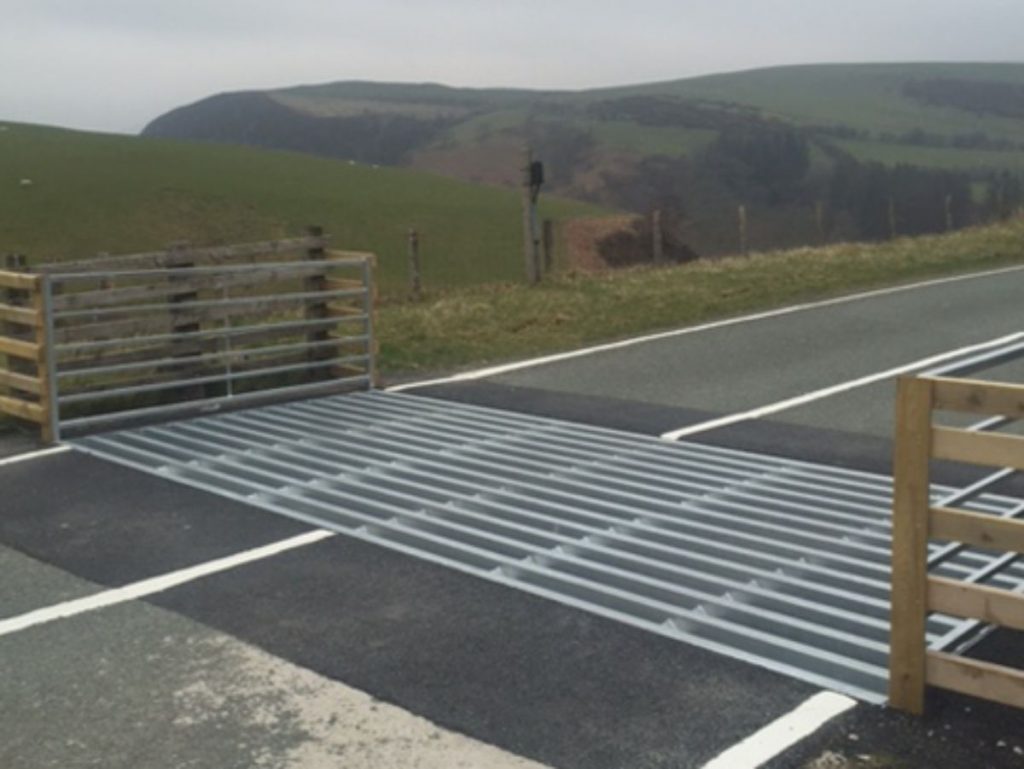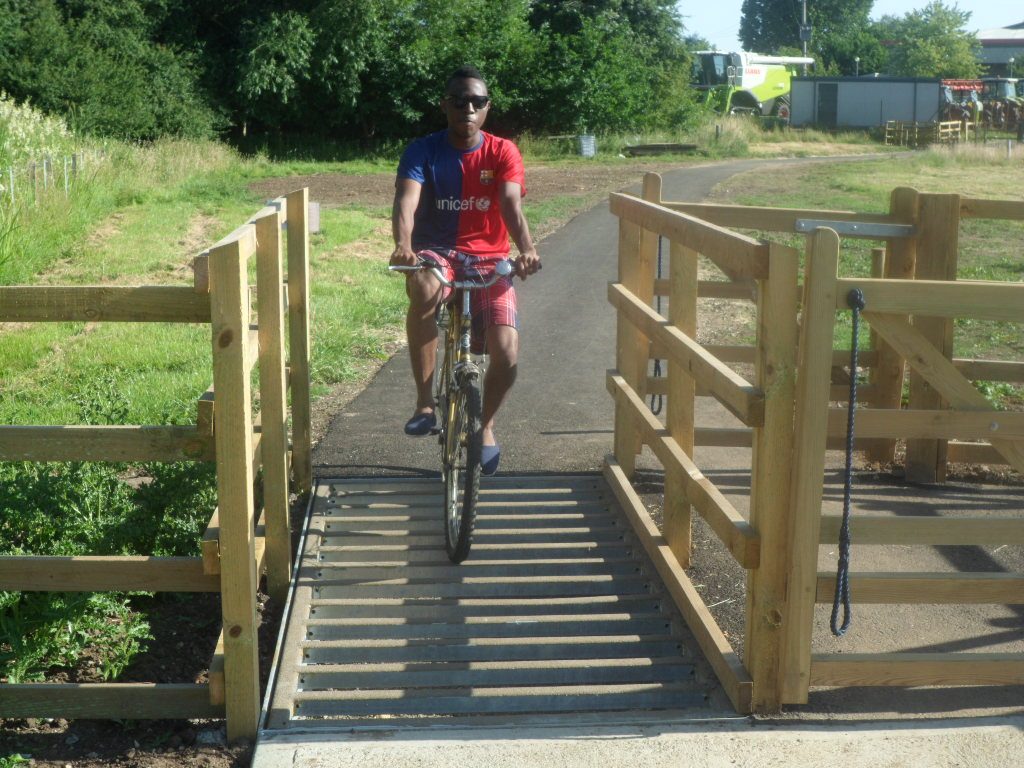
Cattle Grids have been a feature of our rural highways environment for generations. Cyclists on Cattle Grids were early adopters
Cyclists have generally used them with a degree of caution, without too many incidents. For the majority of cyclists this remains the case.
Provided Cyclists on Cattle Grids cross with the wheels parallel to the centre of the road the user will pass safely experiencing a vibration caused by the wheels passing over the spaces between the bars
Bars vary in section. Permitted options are rectangular or circular. Many grids have other not compliant sections. Clearly flat topped sections offer a smoother ride than circular ones.

The upper surfaces of bars can become polished. This does not improve traction, already restricted by intermittent contact. On Cycleway Cattle Grids the use of anti slip coating is well established. http://www.blackburnandroberts.co.uk/cattlegrids/ongie-cycleway-cattle-grid
Cycles have changed as have the users. The sport is growing strongly and as a life style attribute of a greener society it may become immense. Many Cyclists on Cattle Grids own cycles made from high tech materials and these weigh very little. The width of the tyres have been reduced, to improve wind resistance, giving less purchase on the road. Wheel rims have become wider to an extent where wind forces (and stability in wind) become an issue.

Newer materials may be less able to cope with intermittent impacts and the cumulative effect might be failure of the structure or reduced life of the machines the costs of which run to multiple thousands
Accident Statistics are unreliable and probably understate the incidence of accidents involving Cyclists on Cattle Grids